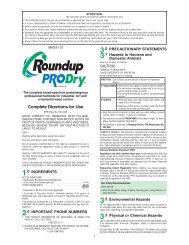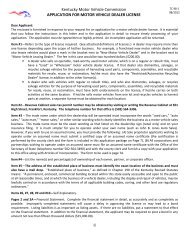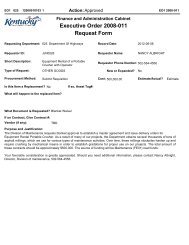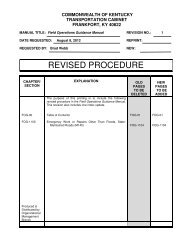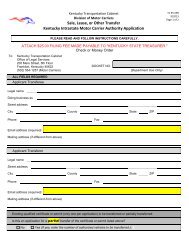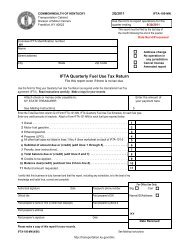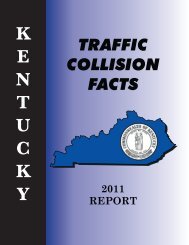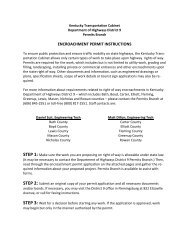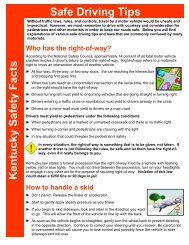woodland period moundbuilders of the bluegrass - Kentucky ...
woodland period moundbuilders of the bluegrass - Kentucky ...
woodland period moundbuilders of the bluegrass - Kentucky ...
- No tags were found...
You also want an ePaper? Increase the reach of your titles
YUMPU automatically turns print PDFs into web optimized ePapers that Google loves.
Most Adena people had cavities in <strong>the</strong>ir teeth, which <strong>the</strong>y nevertreated. Often, this led to abscesses and tooth loss. The chewing surfaces<strong>of</strong> <strong>the</strong>ir teeth were heavily worn from grit in <strong>the</strong>ir food, unlike our teethtoday. Grooves and pits on <strong>the</strong>ir teeth - places where <strong>the</strong> tooth enamelis poorly formed - show that, as children, Adena people experiencedtimes <strong>of</strong> malnutrition and infection. It is very likely that <strong>the</strong>se conditionsoccurred at <strong>the</strong> same time.Because most broken bones healed, archaeologists infer that injuredpeople were well-taken care <strong>of</strong>. This was also true for people whohad birth defects: a man who lived into adulthood with a congenitallydeformed leg was buried in one Boone County mound.Many diseases leave behind traces on bones, so we know that Adenapeople suffered from arthritis and anemia. The former was undoubtedlyrelated to <strong>the</strong>ir active lives. Anemia would have resulted from a poor dietor excessive, chronic blood loss, perhaps caused by intestinal parasites.O<strong>the</strong>r bone changes show that <strong>the</strong>se people also suffered from infections.Bloodborne infections affected many parts <strong>of</strong> <strong>the</strong> skeleton all at once.Localized infections affected specific bones, like those that occurredbecause <strong>of</strong> overlying s<strong>of</strong>t tissue infections or from a kick in <strong>the</strong> shin.RITUAL SITESEach time a relative or friend dies, modern Kentuckians must facemany issues: practical, personal, social, economic, and spiritual. Deathsets in motion a host <strong>of</strong> events. The body must be taken care <strong>of</strong>, andceremonies <strong>of</strong> memorial and mourning must be planned. Relatives andfriends <strong>of</strong> <strong>the</strong> deceased visit with one ano<strong>the</strong>r and share food at formaland informal ga<strong>the</strong>rings. Death requires us to make decisions. Whatshould we do with her belongings? Who will take over his jobs andresponsibilities? Death gives <strong>the</strong> living an opportunity to think about<strong>the</strong>ir own place in <strong>the</strong> world and to remember o<strong>the</strong>rs who have passedaway.Adena peoples faced <strong>the</strong>se same issues when someone died. The factthat <strong>the</strong>y dealt with <strong>the</strong>se issues makes <strong>the</strong>m similar to us today, but <strong>the</strong>ways in which <strong>the</strong>y dealt with <strong>the</strong>m make <strong>the</strong>m Adena. These peopleleft behind ample evidence <strong>of</strong> <strong>the</strong>ir mortuary rituals that we are onlybeginning to understand. Archaeologists have identified three differentkinds <strong>of</strong> Adena ritual sites: circular paired-post enclosures, burialmounds, and geometric earthworks. No two are <strong>the</strong> same. Each site22



